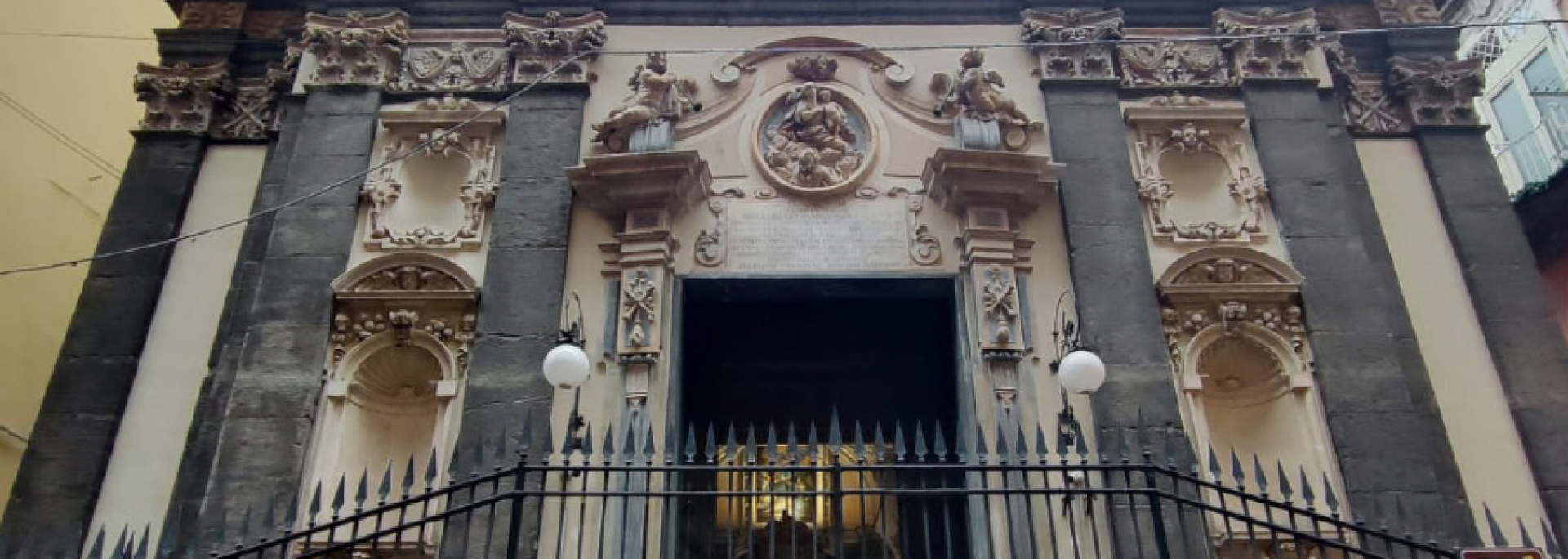Complesso museale of Santa Maria delle anime del Purgatorio ad Arco

The 17th century Complesso of Santa Maria delle Anime del Purgatorio ad Arco leans on the major Decuman, in the ancient centre of Naples. On the curbstones at both sides of the Museum Complex, 3 bronze skulls welcome visitors and worshippers.
The Complex consists of two superimposed churches, the upper one and the lower one, of the Opera Pia museum and of the historical Archive. It was founded by Opera Pia Purgatorio ad Arco, a secular congregation that’s still actively operating, that wanted the church to be erected and dedicated to the Virgin Mary as the one who saves Purgatory souls. Baroque architecture and death symbols characterize the upper church, while the whole Complex safeguards the important historical, artistic, anthropological and archival heritage, as a precious evidence of neapolitan culture.
The impressive lower church hypogeum is reachable through an opening in the upper church floor. For centuries it’s been preserving one of the most important traditions of Naples people, the deeply felt cult of “purganti” souls. The skulls kept in Holy Land niches witness the worshippers’ care for the unknown deceased remains, the pezzentelle souls wandering in Purgatory in search of relief from pain. In neapolitan vision, the dead’s souls are in fact powerful influencers on the living exixtence and are considered spiritual beneficent entities to be honoured and respected, and addressed to be granted a grace, as with saints. Princess Lucia, the most beloved soul of the Purgatorio ad Arco hypogeum, still welcomes flowers, candles, little gifts and requests for help on her niche small altar.
The pezzentelle souls care never menaced the ancient place sacred feature and still remains a unique example of its kind. Nowadays, despite of its museal identity, the upper church still hosts a weekly Mass for the dead.
The Museo per tutti guide suggests to discover the Purgatory souls’ cult starting from the upper church and its artworks through the explanation of elaborate concepts such as soul, Paradise, Purgatory and Hell.
Thanks to the description of the lower church and Lucia’s little altar, the guide deepens into the pezzentelle souls skulls’ care, a particularly lively practice in neapolitan culture.
The upper church visit develops through a bright space, well-lit by artificial light sources. The visit continues through a long staircase descending towards the lower church. Here lighting is lower though diffused. Calm and silence make this space suitable to a slow and relaxing visit.
There are no indoor resting areas.


Contact the museum before your visit
Via dei Tribunali, 39, 80138 Napoli, NA, Italia
Saturdays: 10 a.m. - 5 p.m.
Closed on Sundays, except changes communicated on website or on social networks
Facilities
 Tour guides
Tour guides